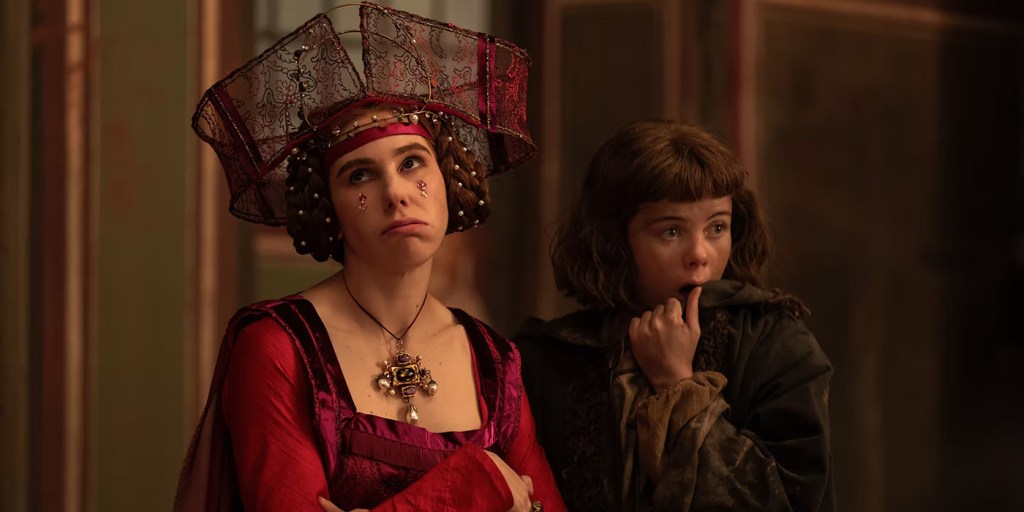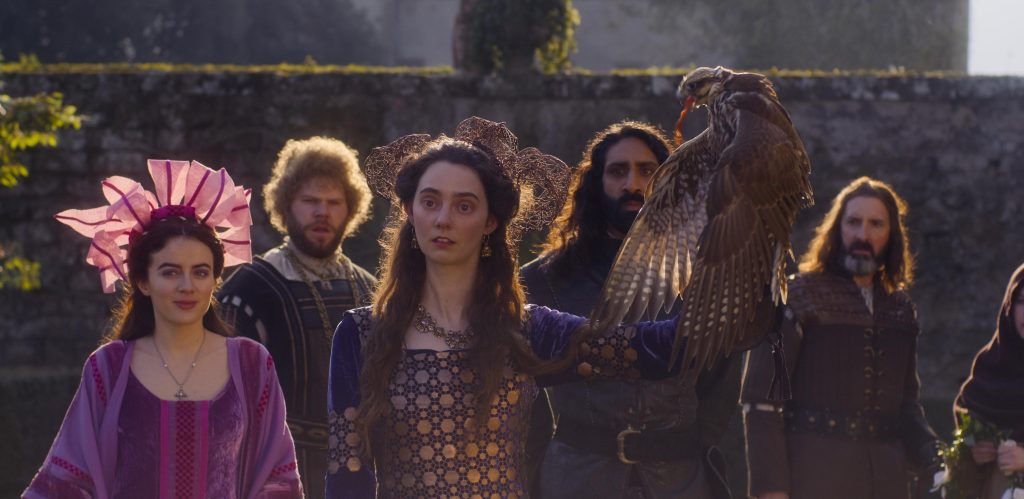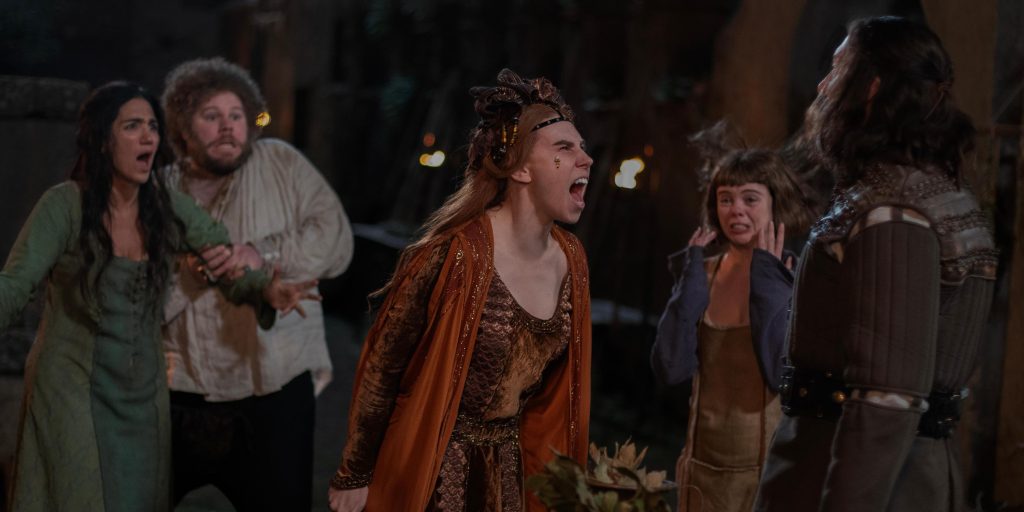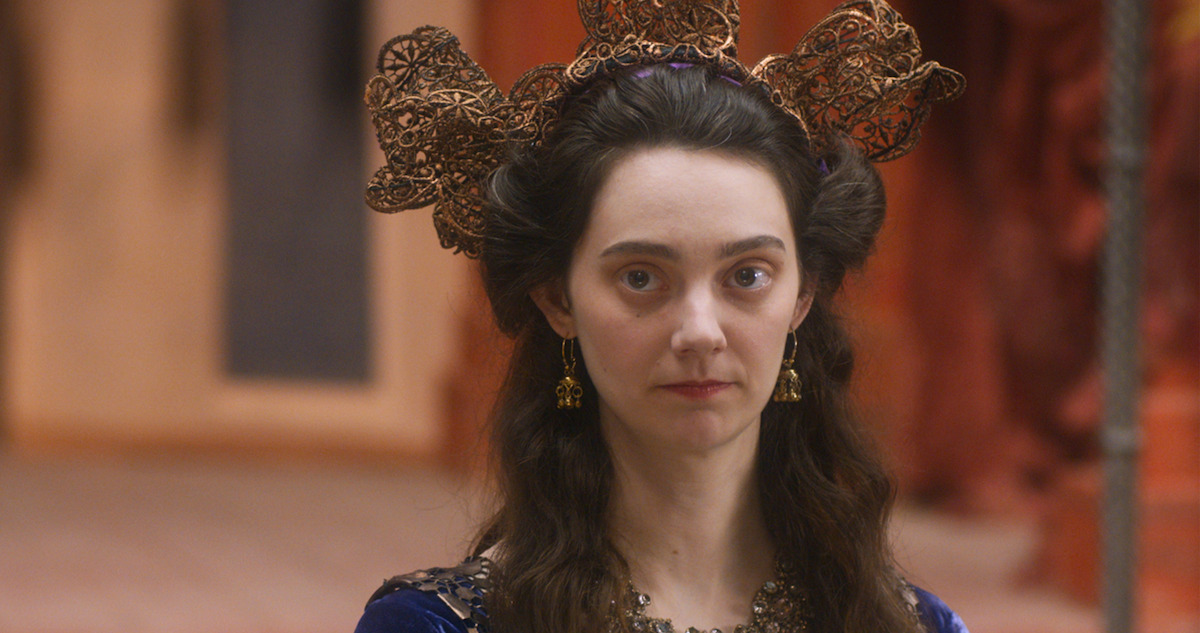Netflix’s ‘The Decameron’ follows a group of nobles who retreat to a palatial residence after the bubonic plague hits Florence in 1348. The dark comedy show explores their exploits and opulence amidst a pandemic as they engage in orgiastic displays of wealth, wine, and sex. Attended by servants, the nobles make a merry time of their captivity while never missing their everyday lives. However, as the days roll by, their pursuit of pleasure and engagement in lavish parties starts wearing thin, and they must start fighting for their survival.
Developed by Kathleen Jordan, the dramedy is an exploration of class culture, the unfiltered debauchery of the privileged, and the rapid spread of a pandemic that has halted a nation’s operations. It probes into societal rules and the ethics of how people make light of a deadly plague. Given its timely examination of subject matters that reflect the present-day world, the roots of ‘The Decameron‘ become an intriguing discourse, prompting questions regarding its genesis and whether it is based on a true story.
The Literary Inspiration of The Decameron
‘The Decameron‘ is a fictional tale inspired by the 14th-century Italian eponymous short-story collection written by Giovanni Boccaccio. The show was drafted by showrunner Kathleen Jordan and her co-writers Megan King Kelly, Marie Hanhnhon Nguyen, Zoe Jarman, Anthony Natoli, James Rogers III, Steve Unckles, and Sarah Stoecker. Boccaccio’s collection describes the adventures of a group of nobles and servants stationed in a villa outside Florence in the middle of the Black Death in 1348. The narrative features frame stories – stories recited within stories – as each wealthy citizen engages in an insular display of wealth and influence while being sequestered in their palace.

Although the Netflix show picks up on a similar premise and setting, Jordan moves away from an exact retelling by presenting a story about survival as the days progress in captivity for the nobles. In an interview, the creator admitted that the show was not strictly adherent to medieval life in Italy, stating, “I think an Italian medievalist will be disappointed if they come to this show expecting to see their favorite Decameron stories depicted.“ Rather, she was interested in exploring how rules and regulations collapse when mortality comes into the picture and how people are capable of anything for survival.
Boccaccio’s collection is a study on human behavior, often sprinkled with a healthy dose of humor prompting a discussion on the banalities of social circles, hierarchies, and the somewhat mysterious ways in which people act towards one another. It is rife with anecdotes upon anecdotes told by the nobles during their quarantine in their villa. Games are played between hosts, while at times, the story also references mythical and real-life historical characters and events. Jordan’s show doubles down on the existent comedy within the novel while also rebelling against some of its notions, particularly in its depiction of the total loss of any governable or imposable law being subjected over the group, whose internal dynamics collapse into chaos.
The Coronavirus Pandemic Acted as the Creative Spark for the Showrunner
The original idea for the show came to Kathleen Jordan early in the COVID pandemic when she witnessed several examples of celebrities acting out of touch and being tone-deaf to the plight of ordinary citizens. She recalled it as being “so irritating and frustrating“ when she heard many celebrities complain about being prisoners while living in luxurious houses. At the same time, she was aware that the rest of the populace was either dying or fighting the pandemic on the frontline as responders. “When at times of crisis, the chasm between the haves and the have-nots grows wider and wider,“ Jordan said. “Obviously, that’s something we’ve seen in the last few years, in particular with COVID.”

Thus, the creator found a perfect metaphor for reflecting the modern societal ailments through the nobles depicted in Giovanni Boccaccio’s novel. By probing the class disparity between the privileged and their servants, she looked to highlight the parallels between today’s world and medieval Italy. Andrew DeYoung, who directed episodes 3 and 4, said, “Kathleen and the writers did such a beautiful job of touching upon what we just went through without being didactic, which is really difficult, you know? I don’t think we want our metaphors to be heavy handed. I think the message is quite beautifully buried in the writing.”
The Decameron is About Survival in the Face of a Deadly Plague
As ‘The Decameron’ tackles the Black Death, a bubonic plague pandemic that rocked Europe during the 14th Century, the show delves into the importance of life and the universal message of survival. During the development process, all the writers watched the reality show ‘Survivor‘ to get to grips with the central theme of the narrative. Harkening back to the COVID-19 pandemic, Kathleen Jordan said that “ultimately this show is about survival,” emphasizing the reality of what people went through when nations were shut down worldwide to halt the progress of the virus and people’s lives were not put at risk.

Tanya Reynolds, who plays Licisca on the show, compared the rising stakes with every episode of the series to William Golding’s 1954 novel, ‘Lord of the Flies.‘ Tony Hale, who stars as Sirisco, also added, “When something like a plague comes along, the ground goes even. It doesn’t matter. So what am I investing in? What relationships am I investing in? How am I treating people? That’s the stuff that matters.“ Consequently, the show exists as a natural and organic representation of people’s desperate clamor for existence as a deadly plague rolls down the country’s belly, claiming lives everywhere. The need for personal preservation outweighs the need for gratification, which ultimately is the case in ‘The Decameron.’


You must be logged in to post a comment.